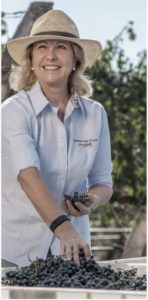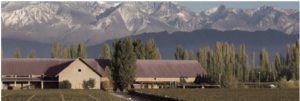Susana Balbo 2017 Harvest Report
Susana Balbo 2017 Harvest Report
Edgardo del Popolo, General Manager at Susana Balbo Wines together with the winemaking team wrote this complete report of the harvest 2017: Warm & Dry a classic Mendoza’s vintage.
 If 2016 wasn’t enough to be the shortest vintage in the last 60 years, this 2017 has been the 2nd. shortest harvest, considering the yields mainly in Uco Valley appellations.
If 2016 wasn’t enough to be the shortest vintage in the last 60 years, this 2017 has been the 2nd. shortest harvest, considering the yields mainly in Uco Valley appellations.
Just above 1, 95 million of tons. harvested along all the winegrowing areas, it surpassed in 12% the 1,74 million of tons harvested in the previous one.
The main contributing factors for another short vintage
Malbecs of 2-3 tons x hectare were a common picture of a high quality – low yielding harvest.
In the Uco Valley, mainly above 1000 meters (3000 feet) elevation, the variety suffered an unexpected drop, even below the 2016 crop level.
Malbec is well known for being a susceptible variety to coulure or millerandage, mainly when weather conditions are special, like a cold spring or strong winds during the flowering period.
We registered a frost at the end of September (the 28th.) that affected severally the chardonnays because they were at the beginning of the budbreak. Malbecs were in dormancy, but they were also affected.
![]()
![]() Even though these events, our observation indicates that the cold spring in 2015 was also responsible for the low yields in 2017, because during the cluster formation (happened during the spring and summer of 2015). temperatures dropped until 3 to 5 degrees below the average, affecting the cluster size and weight.
Even though these events, our observation indicates that the cold spring in 2015 was also responsible for the low yields in 2017, because during the cluster formation (happened during the spring and summer of 2015). temperatures dropped until 3 to 5 degrees below the average, affecting the cluster size and weight.
2016 winter and spring were cold and dry, which allowed almost general frosts.
Veraison occurred almost 10 days in advance, compared with the 2015-2016 season.
 It was a very particular veraison: the longest I’ve ever seen in 25 years. If usually demands 7 to 10 days, veraison this time took 20 to 30 days from beginning to the end.
It was a very particular veraison: the longest I’ve ever seen in 25 years. If usually demands 7 to 10 days, veraison this time took 20 to 30 days from beginning to the end.
Then, harvest came 10 days earlier and winemakers decided to pick the grapes to have a fresh vintage.
At SBW we started to pick 2 weeks before the normal. Our fresh rosé program began in middle February, with beautiful acidity and noticeable fruit expression. We followed then with our white varieties in the Uco Valley and finally we reached the red varieties at the beginning of March.
Whereas January and February were warm and dry, March and April were colder, letting us to make very interesting wines. In some regions, sugar levels stop growing and winemakers decided to not to wait anymore.
We finished our vintage 20 days before the average date and just before the rains. The red wines have a great concentration, bright and intense colours, noticeable acidity, low pH and delicate and strong fruit expression.
It was definitely a vintage of fruit and sun, with natural fresh acidity.
 Back To Menu
Back To Menu